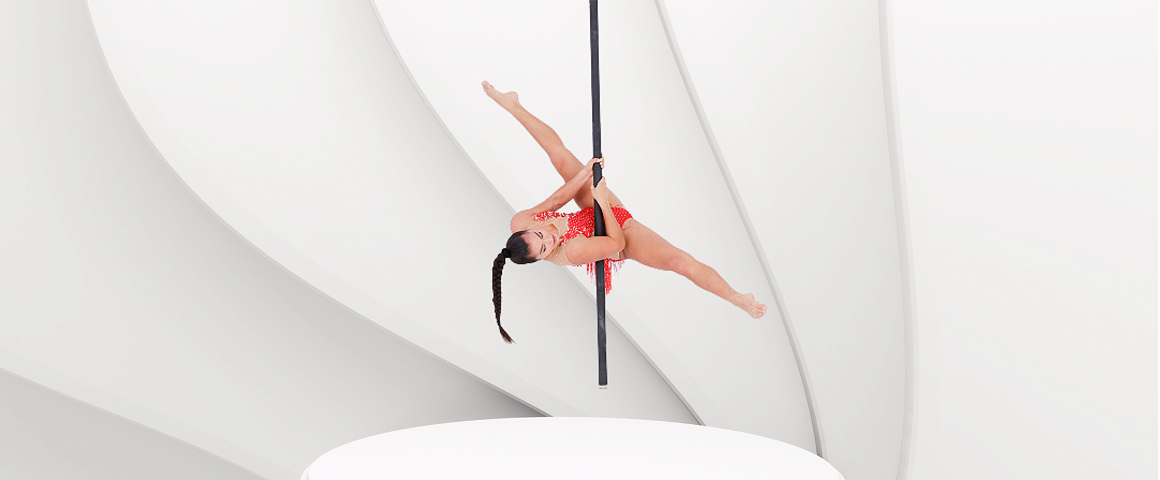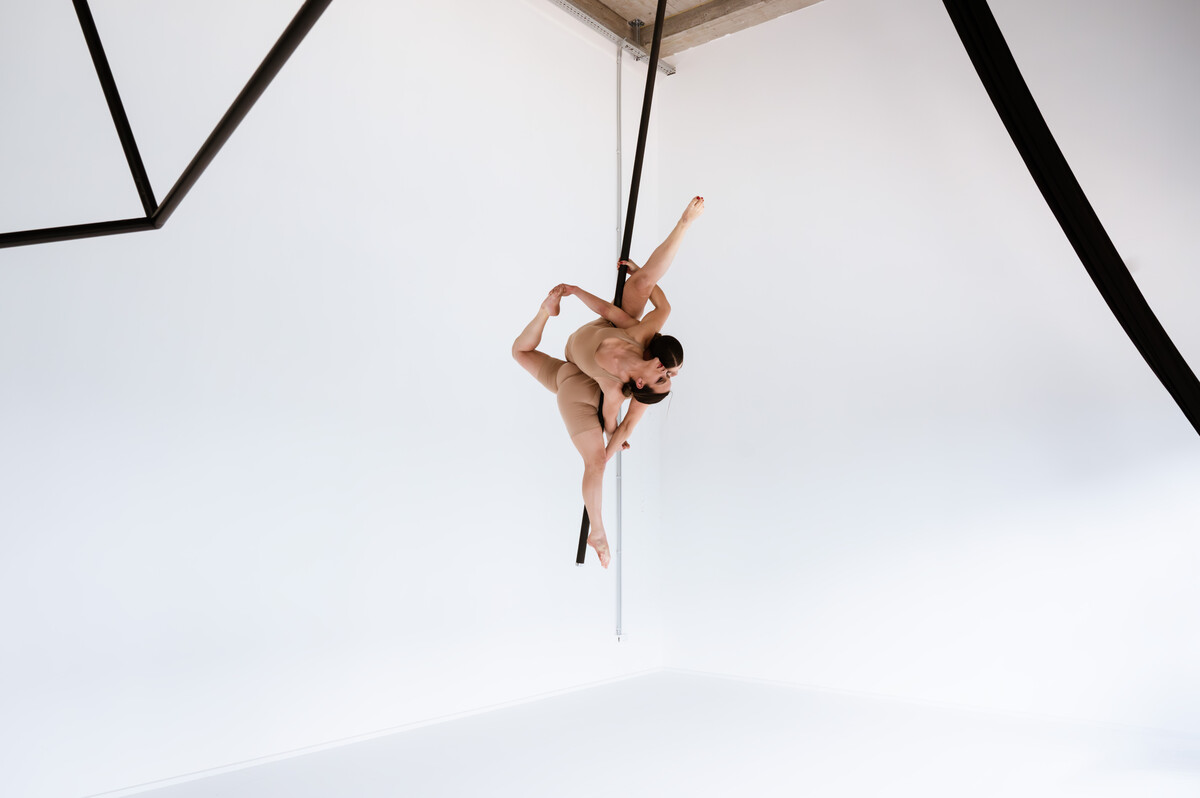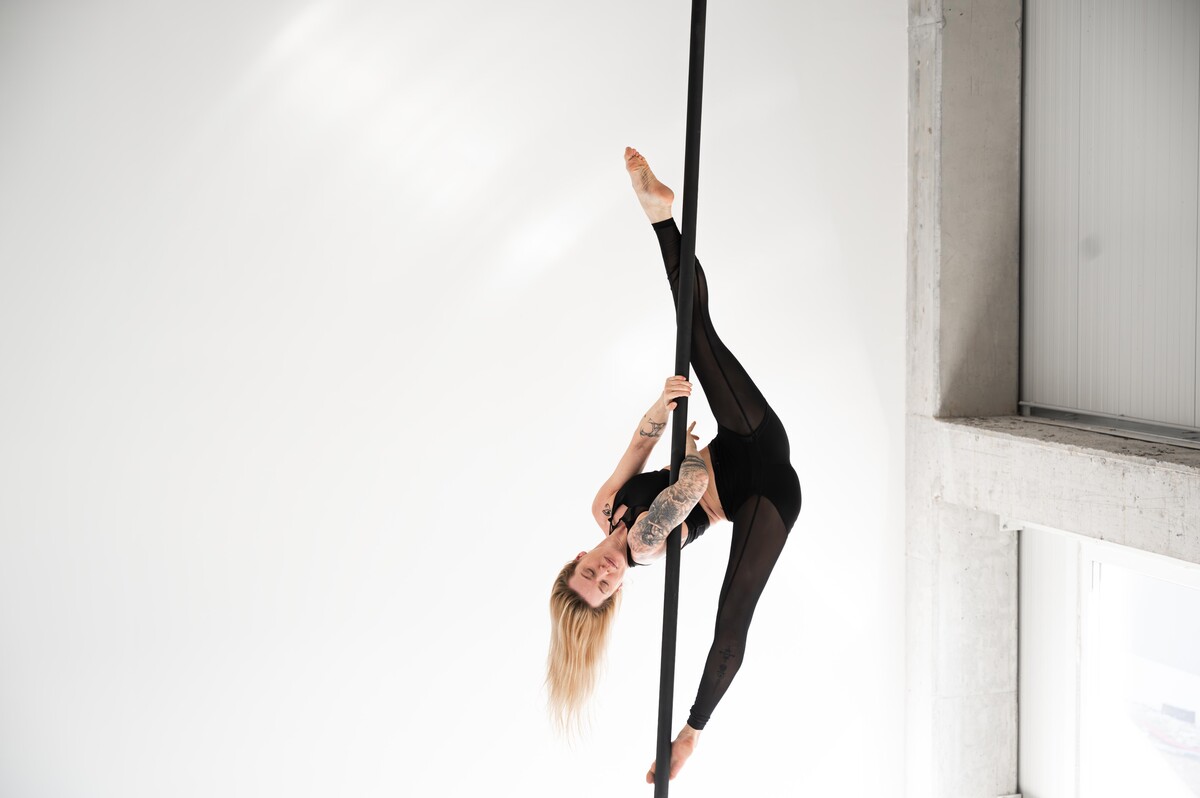
LUPIT pole
Apr 24 - 7 min read


Dive into the essential safety measures for flying pole practice with our comprehensive guide. Learn how to navigate the inherent risks, conduct vital equipment checks, and ensure proper installation for a secure experience. Discover the importance of warm-ups, conditioning, and professional instruction to enhance your skills safely. Embrace safety equipment and effective spotting techniques while listening to your body's needs. Create a supportive environment focused on safety, recovery, and nutrition. Join us at Lupit Pole, where we prioritize your safety, enabling you to confidently and creatively explore the captivating world of flying poles.
In the exhilarating world of aerial arts, flying pole practice stands out as a captivating blend of strength, grace, and acrobatics. As artists dance and spin suspended in the air, the spectacle is nothing short of mesmerizing. Yet, behind the beauty and thrill, lies the paramount importance of safety.
Flying pole, like any aerial discipline, carries inherent risks. Ensuring a safe practice environment is crucial not only for preventing injuries but also for fostering a space where creativity and confidence can flourish.
This article aims to guide both novices and seasoned aerialists through essential safety tips for flying pole practice. From rigging and equipment checks to personal preparation and injury prevention strategies, we'll cover the foundational elements necessary to safeguard your journey in the skies. Embracing these practices will enable you to push the boundaries of what's possible on the flying pole, all while maintaining a secure and injury-free environment.

Flying pole practice introduces unique risks that demand attention and respect. Falls from height, equipment failure, and the physical strain on the body are among the primary concerns.
The aerial nature of flying pole means practitioners are often suspended in the air, increasing the risk of falls that can lead to serious injury. Equipment failure, including issues with the pole's rigging or anchoring system, poses another significant risk, potentially leading to accidents.
Additionally, the intense physical demands of flying pole can strain muscles and joints, raising the likelihood of overuse injuries.
Recognizing and minimizing these risks are crucial steps in creating a safe and secure environment for flying pole practice, ensuring practitioners can focus on their art with peace of mind.
Regular equipment checks are vital in flying pole practice to prevent accidents and ensure the safety of all participants.
Before each session, a comprehensive inspection of the flying pole, rigging system, and safety mats or padding should be conducted. Key aspects to examine include checking the pole for any signs of damage or wear, ensuring all rigging components are secure and free of corrosion, and verifying that safety mats are properly positioned and in good condition.
These checks should be performed at least before every practice session, with a more thorough review scheduled monthly.
Signs indicating the need for repair or replacement include:
Prioritizing these equipment safety checks can significantly reduce the risk of accidents and injuries.
Begin by selecting a location with ample space, free from obstacles, and with a strong, stable ceiling or support structure capable of bearing the weight and dynamic forces of flying pole activities.
Use appropriate tools and hardware, following manufacturer instructions closely. Key steps include:
For those not experienced in rigging techniques, professional pole installation is strongly recommended. A professional can ensure the setup meets safety standards, offering peace of mind and allowing practitioners to focus on their art without worry.
A thorough warm-up and regular conditioning are indispensable for safe flying pole practice, significantly reducing the risk of injury. Engaging in a comprehensive warm-up routine prepares the body for the physical demands of flying poles, enhancing blood flow to muscles and increasing flexibility.
Do the following:
Regularly incorporating these pole dancing exercises into your routine builds the strength, flexibility, and endurance needed for flying pole, enhancing both performance and safety.

Learning from Professionals
Training under the guidance of experienced instructors is invaluable, particularly for beginners embarking on their flying pole journey. Professional instructors bring a wealth of knowledge and insight, offering personalized feedback that is crucial for mastering the intricacies of flying pole techniques.
They ensure that students learn proper form and execution from the outset, significantly reducing the risk of injury. Moreover, instructors can tailor training programs to suit individual needs, helping students to progress at a pace that is both challenging and safe.
Learning from professionals not only accelerates skill development but also instills confidence, ensuring that students build a solid foundation in flying pole practice.
Use of Safety Equipment
Safety equipment plays a crucial role in flying pole practice, serving as a vital buffer against injury.
Crash mats are essential, providing a cushioned landing surface to mitigate the impact of falls. Selecting mats that are thick, firm, and appropriately sized for the area beneath the pole ensures optimal protection.
Protective gear including knee pads and wrist guards, can offer additional safety, especially for beginners or when trying new maneuvers. Spotting belts, used correctly under the guidance of a skilled instructor, can further enhance safety by supporting the performer during complex maneuvers, reducing the risk of falls.
Having a spotter during flying pole sessions is essential for safety, particularly for advanced maneuvers. A spotter can prevent falls and provide support, enabling the performer to attempt difficult moves with confidence. Effective spotting involves staying alert, maintaining proper positioning to catch or assist the performer, and understanding the specific requirements of each maneuver.
Incorporating these safety measures into practice sessions creates a safer environment, enabling practitioners to focus on honing their skills with confidence.

Listening to Your Body
Artists need to recognize the signs of fatigue, strain, or discomfort, which signal the need for rest and recovery.
Pushing beyond one's physical limits can lead to injuries that could sideline you from practice for an extended period. Encourage a mindful approach to training, where acknowledging and respecting your body’s signals is paramount.
Rest days and recovery practices, such as stretching, yoga, or even light activity, are essential to maintain overall health and ensure longevity in the demanding discipline of flying pole.
Creating a Safe Practice Environment
Together, these elements contribute to a holistic approach to safety, promoting a positive and productive flying pole practice environment.

In the captivating realm of flying pole, safety forms the cornerstone that empowers artists to push boundaries, innovate, and express their artistry to the fullest. Embracing the comprehensive safety measures — from understanding risks to diligent equipment checks, and engaging in thorough warm-up and conditioning routines — is pivotal in mastering this aerial discipline.
If you want to begin your flying pole journey, check out our shop and browse for your new flying pole!
Through learning from seasoned professionals, utilizing essential safety equipment, and practicing effective spotting techniques, practitioners can soar to new heights with confidence and grace. By listening to one's body and creating a nurturing practice environment, the journey in flying pole becomes not just about achieving technical prowess but also about holistic well-being.
Lupit Pole, with our dedication to quality and safety in aerial arts, underscores the importance of a conscientious approach to practice. Our commitment to fostering a secure, supportive community reflects the essence of flying pole — where safety, creativity, and community converge, allowing this breathtaking art form to thrive and inspire.